Alright adventure junkies and content creators! Let’s be real. You’re here because you love capturing those epic, heart-pounding moments – the rush of carving down a mountain on a snowboard, the splash of a perfectly caught wave, or the sheer, quiet joy of exploring a hidden trail. For years, one name has echoed through the canyons and across the oceans as the king of action cameras: GoPro. They’ve undeniably set the standard for what a rugged, portable camera can do.
But the tech world moves fast, and the throne is no longer uncontested. What if I told you there’s a whole world of incredible action cameras out there that are not just “alternatives,” but serious, heavyweight contenders? Cameras that, in some cases, might even be a better fit for you?
Maybe you’re looking for a camera that’s a little kinder to your wallet, or perhaps you’re a vlogger who needs a killer front-facing screen. Maybe you want to blow people’s minds with reality-bending 360-degree footage. Whatever your reason for looking, you’ve landed in the right place. We’ve scoured the market, put these cameras through their paces, and are thrilled to bring you the definitive guide to the Top 4 GoPro Alternatives that truly compete on performance, features, and overall value.
Ready to dive in and discover your next adventure companion? Let’s get rolling!
Table of Contents
Why Even Look Beyond the GoPro Hype?
Before we jump into our top picks, let’s talk about the “why.” While GoPro consistently delivers top-notch quality and innovation, the action camera landscape has exploded with competition. This is fantastic news for consumers like us! Here are a few compelling reasons to explore the world beyond the brand leader.
Bang for Your Buck: Let’s be honest, the latest GoPro can be a significant investment, especially when you factor in the necessary mounts and accessories. There are fantastic alternatives that offer comparable 4K video, robust stabilization, and rugged builds at a fraction of the cost, leaving more money in your pocket for, you know, actual adventures.
Innovating in Different Directions: While GoPro perfects its formula, other brands are experimenting with incredible new features. Think integrated 360-degree capture that lets you reframe your shot after you’ve filmed it, or clever modular designs. Some alternatives specialize in areas like low-light performance or have user interfaces that some people find more intuitive.
The Vlogging Revolution: The rise of vlogging has changed the game. Many GoPro alternatives have put a huge emphasis on features that make life easier for content creators, such as larger, more functional front-facing screens, superior built-in microphones, and quick-release systems designed for vertical social media content.
Form Factor and Design: Not every adventure demands the exact same camera shape and size. Sometimes a smaller, cube-shaped camera is better for tight spots, or a vertical-oriented body feels more natural. The variety in design means you can find a camera that physically fits your needs perfectly.
Ultimately, the “best” action camera is the one that best serves your unique needs. So, let’s explore the top players giving GoPro a serious run for its money.
Contender #1: DJI Osmo Action 3
The Feature-Packed All-Rounder
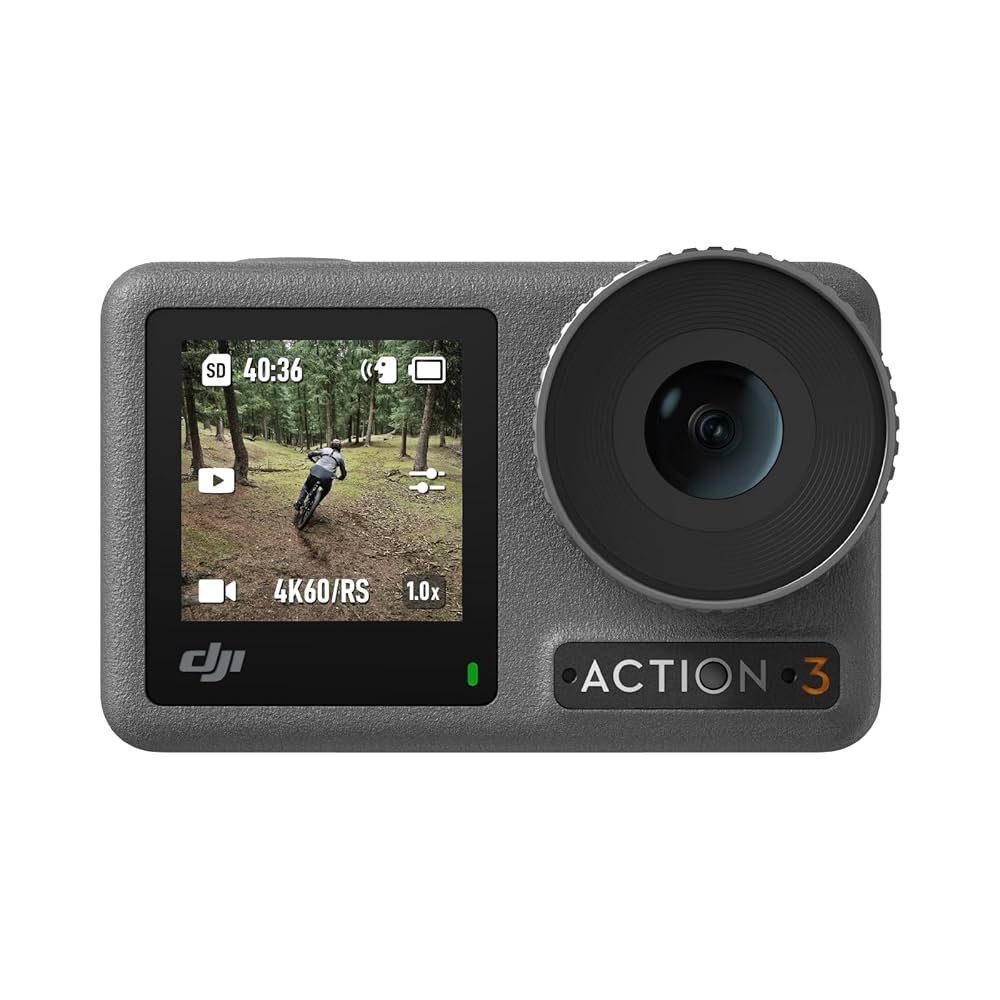
DJI is a name synonymous with high-quality camera technology, especially in the world of drones where smooth, stable footage is paramount. They’ve channeled that expertise into their Osmo Action series, and the Action 3 is a testament to their engineering prowess. This camera is a direct challenger to GoPro’s flagship, offering a compelling package that goes head-to-head on nearly every spec, and even surpasses it in a few key areas.
Key Features In-Depth:
Brilliant Dual Touchscreens: This is more than just a gimmick. The front touchscreen is fully functional, meaning you can change settings, review footage, and frame your shot perfectly for vlogging without ever having to turn the camera around. It’s incredibly responsive and a huge quality-of-life improvement.
RockSteady 3.0 & HorizonSteady: DJI’s stabilization is nothing short of magic. RockSteady 3.0 smooths out even the most jarring bumps and shakes from a mountain bike trail or a choppy boat ride, making your footage look professionally shot. HorizonSteady is the next level, keeping your footage perfectly level with the horizon, even if you tilt the camera a full 360 degrees. It’s wild.
Vertical Shooting Made Easy: DJI understands the importance of social media. Their innovative magnetic quick-release mounting system includes a protective frame that allows you to instantly switch between horizontal and vertical mounting. No extra accessories needed. It’s a genius design for anyone creating content for TikTok or Instagram Reels.
Extreme Temperature Battery Life: One of the Action 3’s standout features is its battery performance in the cold. It’s designed to handle freezing temperatures down to -4°F (-20°C) with minimal performance loss, making it a superior choice for skiers, snowboarders, and winter adventurers.
10-bit Color Depth: For the video nerds out there, this is a big deal. Capturing in 10-bit color means the camera records over a billion shades of color, compared to 16 million in standard 8-bit. This gives you far more flexibility when color grading your footage in post-production, preventing that “banding” effect you sometimes see in skies.
Who’s It For?
The DJI Osmo Action 3 is for the serious hobbyist, vlogger, and all-around adventurer who wants a top-tier camera without the “GoPro tax.” If you create content for multiple platforms (YouTube and TikTok), the native vertical shooting is a game-changer. It’s an incredibly versatile and reliable GoPro alternative.
Keep in Mind:
While the 4K image quality is fantastic, some pixel-peepers might find GoPro’s 5.3K resolution offers slightly more detail for cropping. However, for most users, this difference is negligible.
Contender #2: Insta360 X3
The 360° Creative Powerhouse
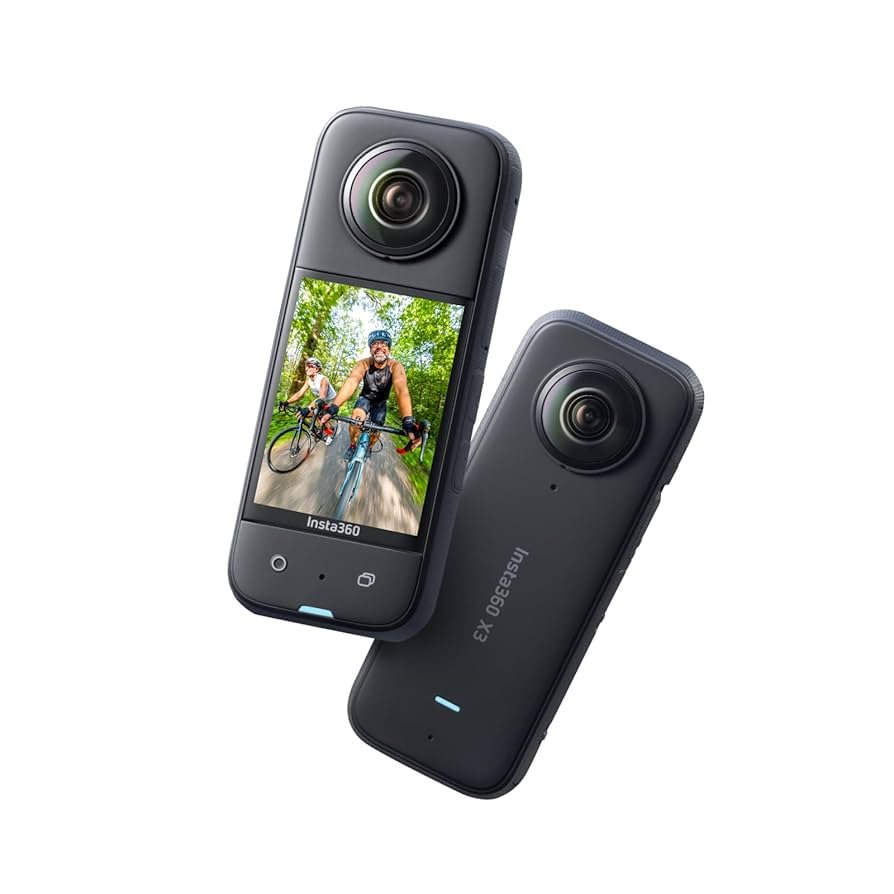
If you find traditional action cameras a bit… limiting, then prepare to have your mind blown. The Insta360 X3 isn’t just a camera; it’s a creative tool that fundamentally changes how you capture your world. By filming everything in a 360-degree sphere, the pressure of framing the perfect shot in the moment disappears. Just hit record and decide on the best angles later.
Key Features In-Depth:
5.7K 360° Video (The “Shoot First, Point Later” Magic): This is the core feature. You capture a full spherical video, and then in the Insta360 app, you can move a virtual camera around within that sphere. You can create traditional flat video clips, panning and tilting as if you had a camera operator with you. Did you miss a cool moment behind you? No problem, just reframe the shot to show it.
The Invisible Selfie Stick: This feels like black magic. When you use Insta360’s selfie stick, the camera’s software automatically stitches it out of the final footage. The result is incredible “drone-like” third-person shots where the camera appears to be floating in the air, following you.
Single-Lens Mode: Don’t want 360° all the time? The X3 can also function like a traditional action camera. Its Single-Lens Mode shoots sharp, wide-angle 4K video, giving you the best of both worlds in one device.
FlowState Stabilization & 360° Horizon Lock: The stabilization is a cornerstone of the Insta360 experience. It’s incredibly smooth, and because it’s capturing everything, the horizon lock is always on and always perfect, no matter how you spin or flip the camera.
Powerful AI-Powered Editing Suite: The Insta360 mobile and desktop apps are packed with AI features that make editing fun. “Shot Lab” offers one-tap templates for creating mind-bending effects like “Sky Swap” or “Clone Trail.” It lowers the barrier to entry for creating truly unique, viral-worthy video clips.
Who’s It For?
This camera is for the creative storyteller, the solo traveler who wants epic third-person shots, and anyone who wants maximum flexibility. If you love experimenting with unique angles and effects, or you simply want to capture everything and not worry about missing a moment, the X3 is an unparalleled GoPro alternative.
Keep in Mind:
The workflow is different. You will need to spend time in the app to “reframe” your 360° footage into a standard video. Also, the dual lenses are more exposed than a traditional action cam, so you need to be a bit more careful with them.
Contender #3: Akaso Brave 7 LE
The Undisputed Budget Champion
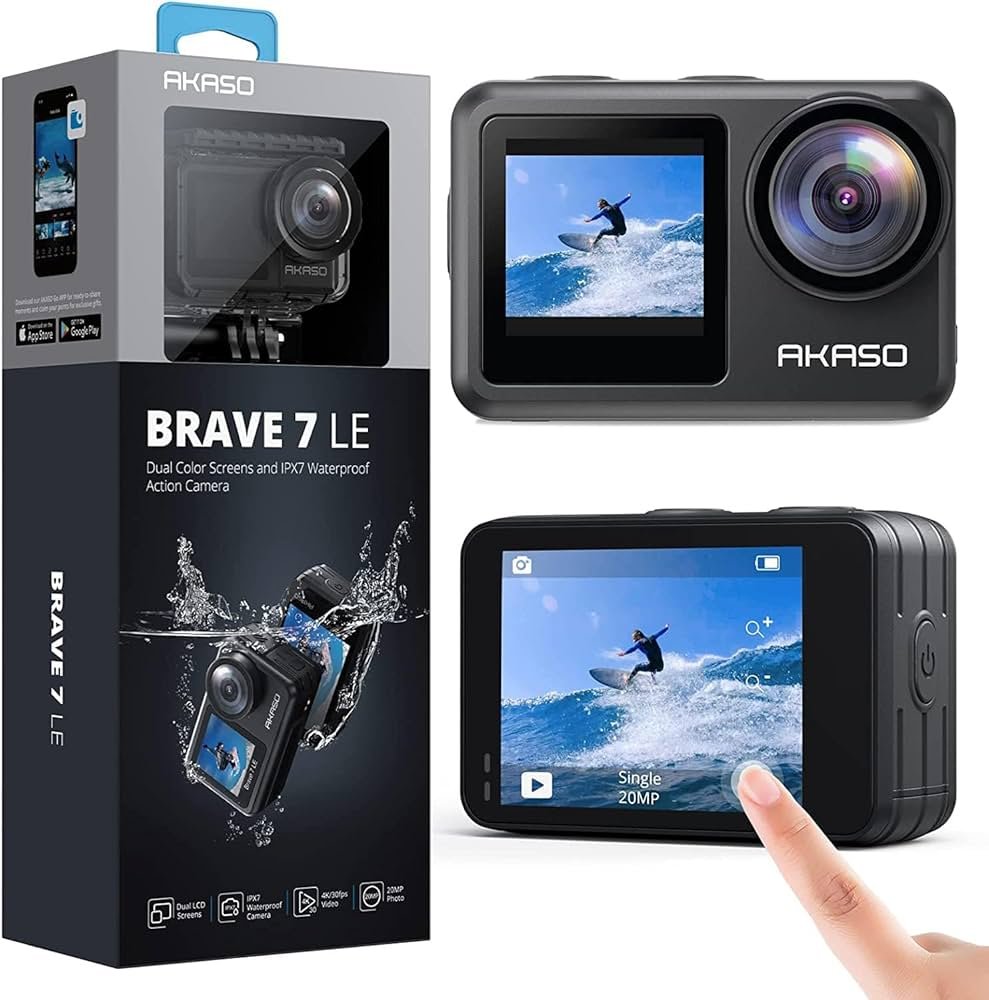
For a long time, “budget action camera” meant poor image quality, terrible stabilization, and a frustrating user experience. Akaso has completely changed that perception. The Brave 7 LE delivers a set of features that were exclusive to high-end cameras just a few years ago, all at a price that makes it accessible to almost everyone.
Key Features In-Depth:
True Dual-Screen Design: It’s genuinely surprising to find a functional front-facing color screen on a camera at this price point. It’s perfect for framing up selfies or vlogging shots, a feature that makes it instantly more usable than many other budget options.
IPX7 Water-Resistant Body: The camera body itself is water-resistant, meaning it can handle splashes, rain, or a quick accidental dunk without a problem. For deeper dives, it comes with an included waterproof housing that takes it down to 40 meters (131 feet).
Improved 6-Axis EIS 2.0: While it may not be on the same level as GoPro’s HyperSmooth or DJI’s RockSteady, Akaso’s Electronic Image Stabilization (EIS) is remarkably effective for the price. It does a solid job of smoothing out walking, running, and moderate vibrations, making your footage far more watchable.
Comprehensive Accessory Bundle: This is a huge part of the Akaso value proposition. Right in the box, you get two batteries, a remote control, and a massive assortment of mounts and attachments. With a GoPro, these would all be separate purchases that could add up to hundreds of dollars.
Adjustable Field of View (FOV): You can easily toggle between wide, medium, and narrow fields of view, giving you more creative control over how you frame your shots, from epic wide landscapes to more focused close-ups.
Who’s It For?
The Akaso Brave 7 LE is the perfect GoPro alternative for beginners, families, or anyone on a tight budget. It’s also an excellent choice for a “B” camera or one you’re willing to put in slightly riskier situations where you wouldn’t want to damage a $400+ camera.
Keep in Mind:
Image quality, especially in low light, won’t match the premium contenders. The stabilization is good, but not flawless for extreme sports. But for the price, the performance is simply unbeatable.
Contender #4: Sony RX0 II
The Pocket-Sized Cinema Camera
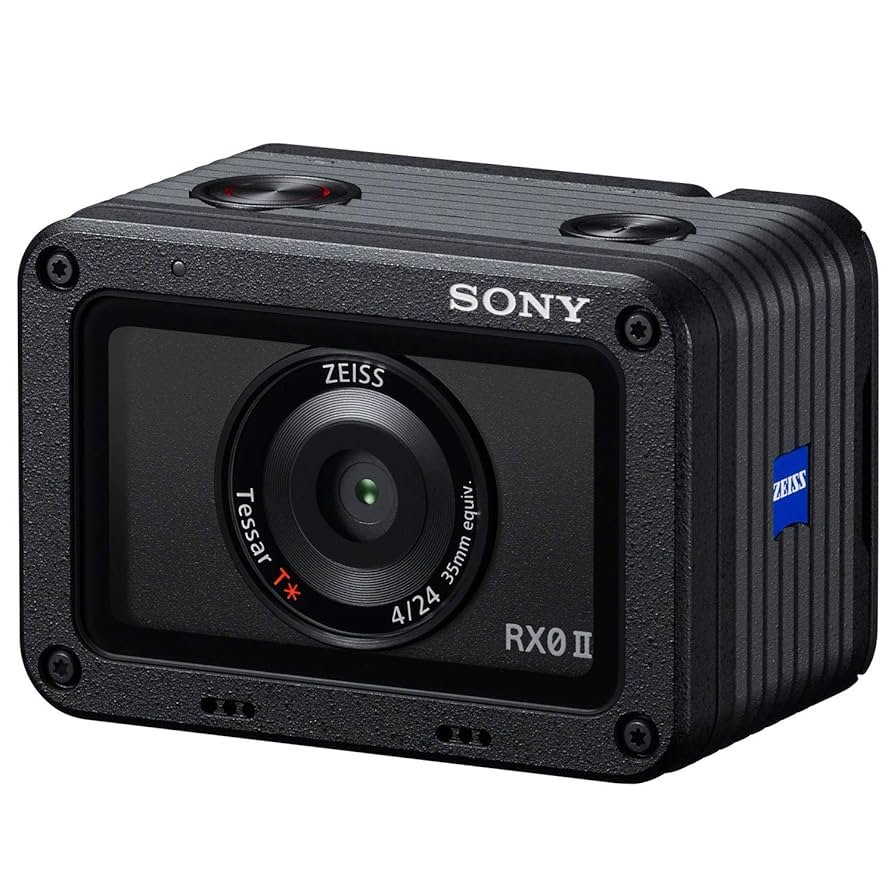
Sony took a different path. Instead of copying the traditional action camera formula, they leveraged their expertise in professional cinema and mirrorless cameras and crammed it into an impossibly tiny, crushproof, and waterproof body. The RX0 II is less of a direct GoPro competitor and more of a specialized tool for those who prioritize image quality above all else.
Key Features In–Depth:
Massive 1.0-type Stacked CMOS Sensor: This is the camera’s secret weapon. Its sensor is physically much larger than the sensors in any other camera on this list. A larger sensor captures more light, resulting in dramatically better low-light performance, richer colors, and a wider dynamic range. The image quality is closer to a high-end point-and-shoot than a typical action camera.
Legendary ZEISS® Tessar T Lens:* Sony paired that amazing sensor with a premium German-engineered lens. It delivers outstanding sharpness and clarity from edge to edge, with minimal distortion.
Pro-Level Video Features: The RX0 II offers features you’d find on a much larger camera, like S-Log2 picture profiles. This allows professional videographers to capture flat-looking footage that contains a huge amount of data, providing maximum flexibility for color grading in post-production.
Incredibly Rugged Build: This little camera is built like a tank. It’s waterproof to 10 meters, shockproof from drops up to 2 meters, and crushproof up to 200kgf. And that’s all without any additional housing.
Tilting LCD Screen: A small but crucial feature, the screen can tilt up 180 degrees, making it surprisingly capable for vlogging and taking selfies, ensuring you get the perfect framing.
Who’s It For?
The Sony RX0 II is for prosumers, cinematographers looking for a rugged crash cam or a unique perspective camera, and quality enthusiasts who want the absolute best image quality possible in the smallest, toughest package. If you need broadcast-quality footage from a camera you can mount anywhere, this is your tool.
Keep in Mind:
It lacks the ultra-wide “action camera” field of view. There is no in-body stabilization for 4K video (though there is electronic stabilization for HD), so it’s best used on a gimbal or tripod for smooth shots. It also carries a premium price tag.
Frequently Asked Questions (FAQ)
Q1: Are GoPro alternatives really as good as the real thing?
That’s the million-dollar question! The honest answer is: it depends on the model and what you value most. High-end alternatives like the DJI Osmo Action 3 are absolutely direct competitors, matching or even exceeding GoPro in areas like battery performance in the cold and user interface design. On the other hand, a budget model like the Akaso Brave 7 LE competes on value, not on raw specs. It offers a fantastic experience for a fraction of the price, but a video professional would notice the difference in image quality.
Q2: Can I use my existing GoPro mounts and accessories with these cameras?
For the most part, yes! The good news is that the “two-pronged” or “finger” mounting system that GoPro popularized has become the industry standard. This means that most of your existing mounts for helmets, chests, and handlebars will be compatible with cameras like the DJI Osmo Action 3 and the Akaso Brave 7 LE. However, accessories that are form-fitting, like specific protective cases (cages) or lens filters, are almost always brand-specific.
Q3: Which GoPro alternative is the absolute best for vlogging?
If vlogging is your primary use, the DJI Osmo Action 3 is arguably the best choice on this list. Its fully-functional front-facing touchscreen makes framing yourself a breeze, the built-in microphones are excellent, and its magnetic quick-release system for switching to vertical filming is a game-changer for social media content. The Insta360 X3 is also a fantastic and creative vlogging tool, as its “Invisible Selfie Stick” feature gives you amazing third-person perspectives that are impossible with a traditional camera.
Q4: Is the video quality on a budget action camera like the Akaso good enough?
Absolutely, for most people! The video quality from a modern budget camera like the Akaso Brave 7 LE is more than good enough for sharing on social media, creating YouTube videos, and capturing memories to share with friends and family. It records in crisp 4K, and the stabilization is effective. While it might not have the same color science or dynamic range as a $400+ camera in challenging lighting, you will be genuinely impressed by the quality you get for the price.
Q5: Do I really need a 360 camera like the Insta360 X3? Is it hard to use?
You don’t need it in the way you need a camera to record video, but it unlocks a level of creative freedom that traditional cameras can’t touch. The core benefit is “shoot first, point later.” You never have to worry about missing the action because you’re capturing everything at once. Insta360’s app is surprisingly intuitive and makes editing fun with AI-powered templates. If you just want simple point-and-shoot clips, a traditional camera is faster. But if you enjoy the creative process and want to produce truly unique videos, the learning curve is small and the payoff is huge.
Choose Your Adventure, Choose Your Camera!
So there you have it – four incredible GoPro alternatives that aren’t just playing catch-up but are blazing their own trails in the world of action cameras. The days of GoPro being the only serious choice are long gone. The market is now vibrant and filled with innovation, offering something for every type of adventurer and creator.
For the all-around performer and vlogger, the DJI Osmo Action 3 is a feature-rich powerhouse. For the creative visionary, the Insta360 X3 opens up a new universe of possibilities. For the budget-conscious beginner, the Akaso Brave 7 LE offers unbeatable value. And for the image quality purist, the Sony RX0 II delivers professional results in a tiny, tough package.
The most important thing is to think about how you plan to use your camera. Don’t be afraid to explore beyond the familiar brand name and discover the perfect tool to capture your next unforgettable story.
Ready to gear up? Head over to mindgearmen.com to explore our in-depth reviews, side-by-side comparisons, and find the best deals on all the gear you need for your next adventure!
What’s your favorite GoPro alternative? Do you own one of these cameras? Share your experiences and questions in the comments below – we’d love to hear from you! Also, don’t forget to subscribe to mindgearmen.com.

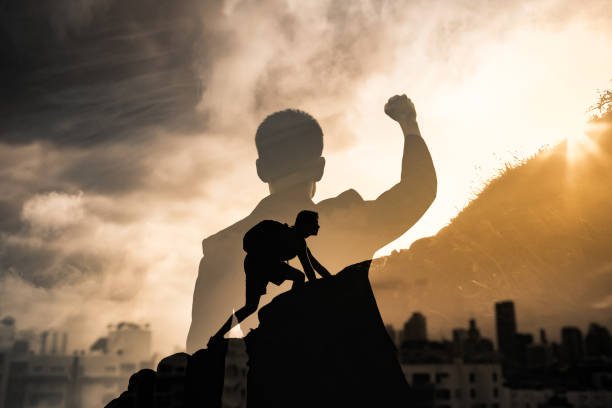

I love your blog.. very nice colors & theme. Did you create this website yourself? Plz reply back as I’m looking to create my own blog and would like to know wheere u got this from. thanks